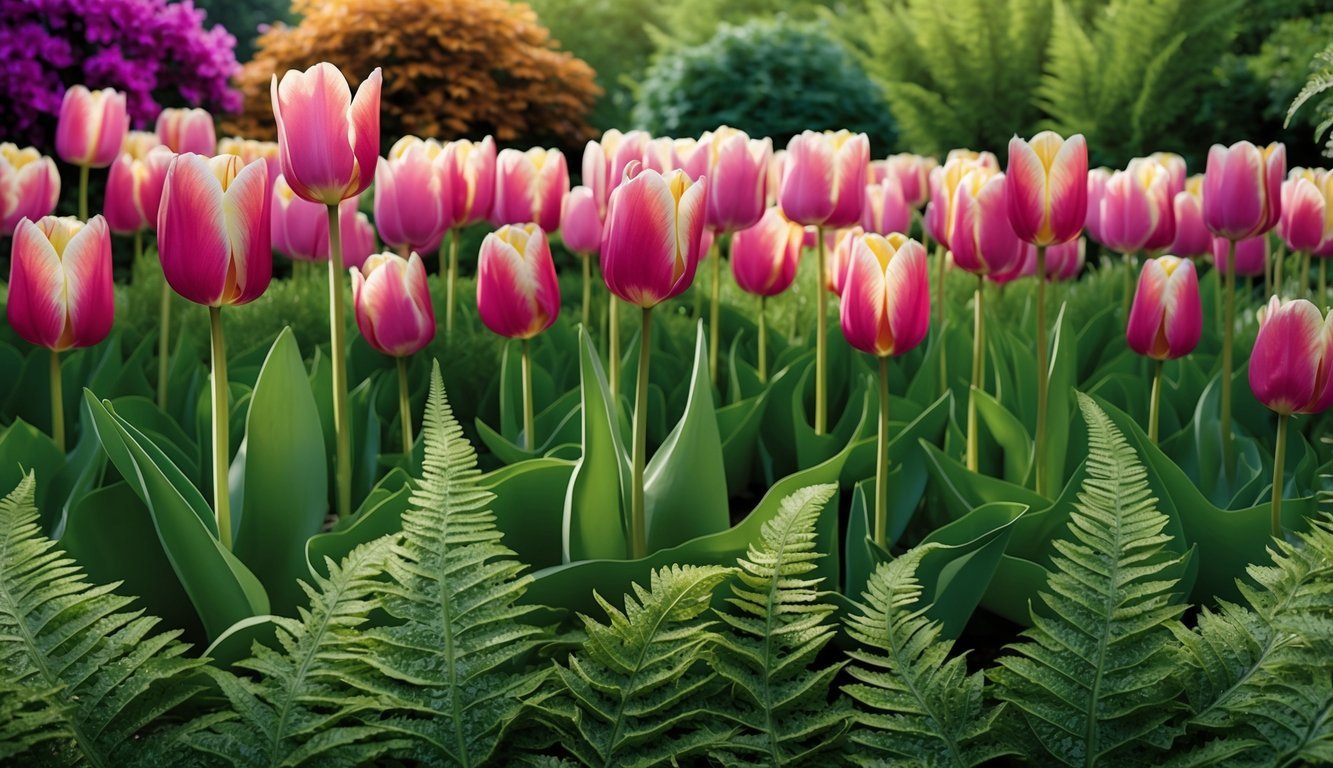
To cultivate a thriving tulip garden, it’s vital to choose companion plants wisely.
Tulips, known for their stunning hues that announce spring’s arrival, are relatively easy to care for, but their success hinges on several factors.
These include selecting quality bulbs and ensuring the soil drains well.
A crucial but often neglected element is the choice of nearby plants.
Some can inhibit tulip growth by competing for vital resources, providing too much shade, or attracting harmful pests.
Here are some recommendations from gardening experts about which plants to steer clear of when planting tulips.
Plants That Create Competition
- Brunnera (Siberian Bugloss)
Tulips flourish in sunny spots or light shade.Thus, planting them near shade-loving perennials like brunnera isn’t ideal.
This attractive plant, with its heart-shaped leaves and charming blue blooms reminiscent of forget-me-nots, can easily overshadow tulips.
- River Birch Trees
Tulips thrive in well-drained soil; however, proximity to moisture-loving plants such as river birch trees can be problematic.These trees usually prefer wet conditions, which conflicts with the drier soil preference of tulips.
- Daffodils
Both daffodils and tulips grow from bulbs, but daffodils have a greater thirst for water.This can lead to competition for hydration, which tulips also desperately need to bloom beautifully.
Keeping them separate is wise to ensure both can thrive.
- Walnut and Magnolia Trees
Big plants, like walnut and magnolia trees, can overshadow tulips by hoarding sunlight and nutrients.Their root systems can stifle tulip growth due to allelopathy—a natural strategy that these trees employ to reduce competition from other plants.
Plants That Attract Pests or Compete for Resources
- Hellebores (Lenten Rose)
Hellebores are perennials that tolerate shade well, but they can obscure early-spring tulip flowers.To keep them visible, it might be helpful to trim back their foliage come fall.
- English Ivy
Beware of spreading invasives like English ivy.Their aggressive root systems can siphon off nutrients that tulips need, stunting their growth.
- Lilies
Similar to tulips, lilies are bulbous plants.Unfortunately, they can multiply underground and create competition for limited resources.
It’s best to keep them at arm’s length.
Other Considerations for Your Tulip Garden
- Hostas and Daylilies
Since tulips are a favorite target for deer, planting them near other deer-attractive plants, such as hostas or daylilies, could heighten the risk of them being devoured.Hostas, in particular, are quite appealing to these critters.
- Carrots
Mixing tulips with root vegetables like carrots is not advisable.Doing so can draw rodents like moles and voles, who might mistake tulip bulbs for a tasty treat, leading to a disappointing garden come spring.
By understanding which plants can hinder or compete with tulips, you can curate a garden space that nurtures these vibrant blooms.
Select your companions wisely to ensure your tulip garden flourishes and remains a striking focal point of your landscape.
Source: Marthastewart

